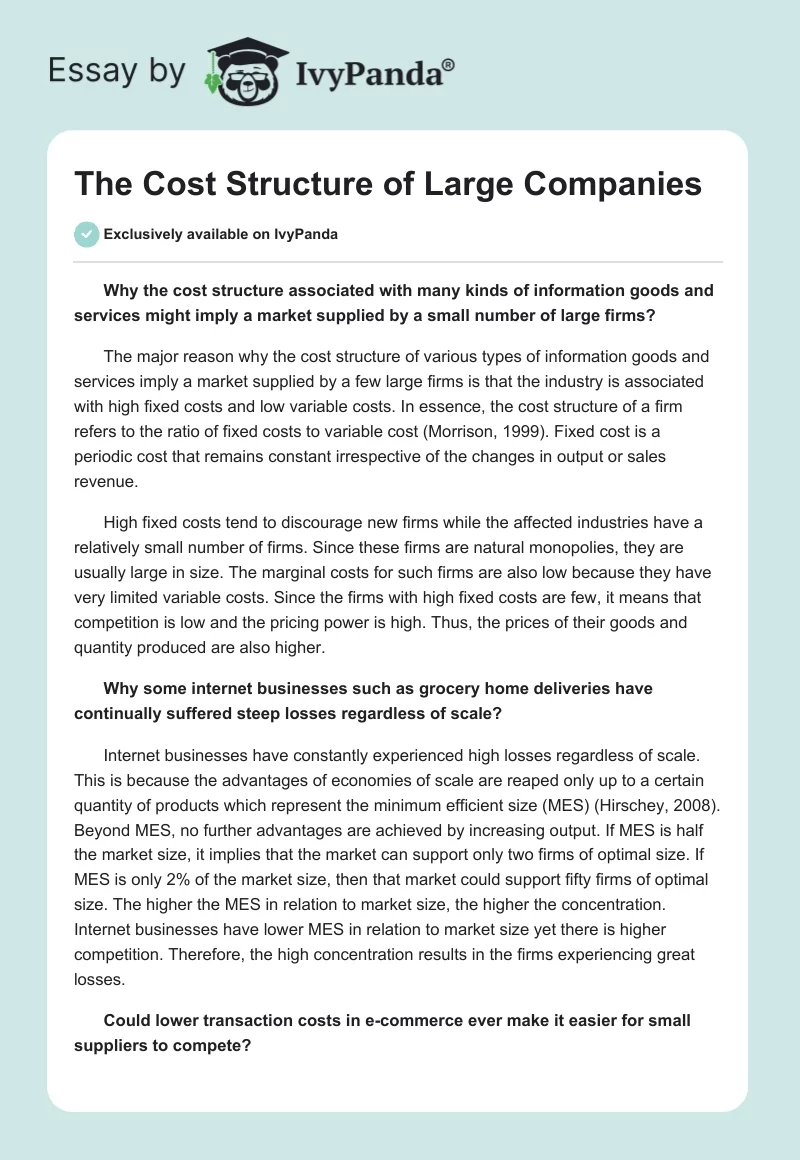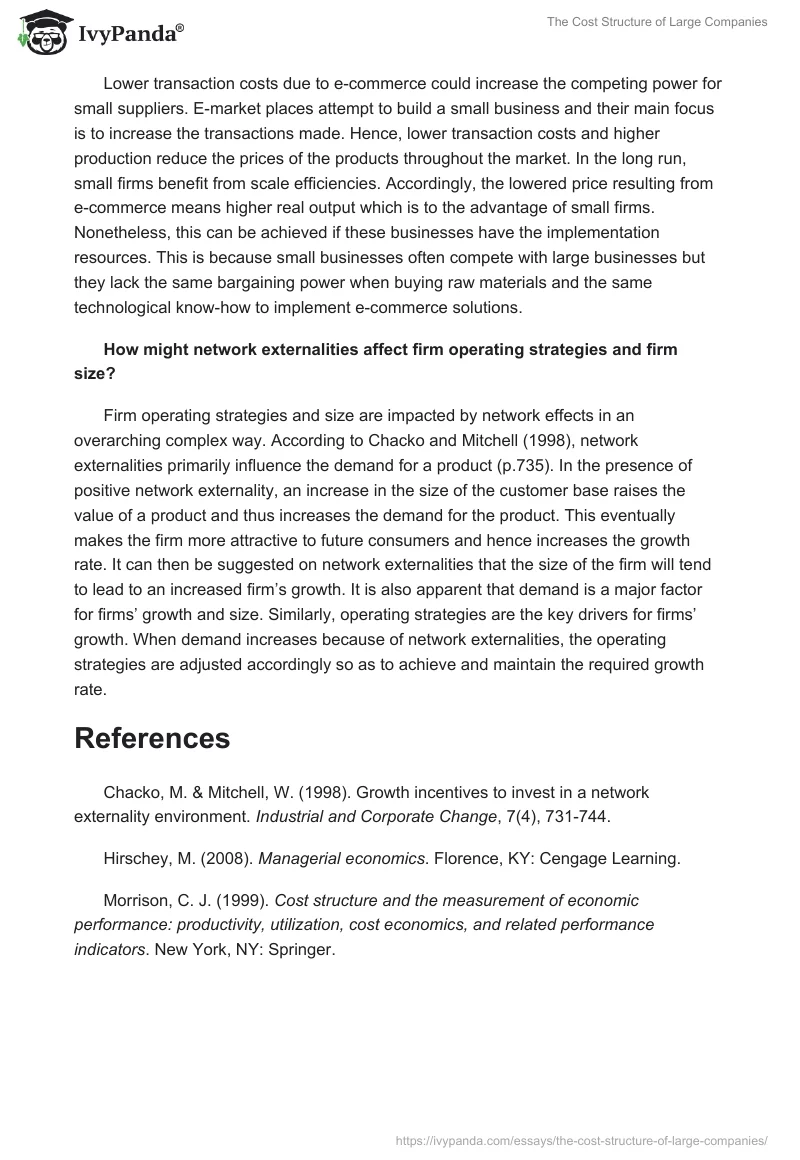Why the cost structure associated with many kinds of information goods and services might imply a market supplied by a small number of large firms?
The major reason why the cost structure of various types of information goods and services imply a market supplied by a few large firms is that the industry is associated with high fixed costs and low variable costs. In essence, the cost structure of a firm refers to the ratio of fixed costs to variable cost (Morrison, 1999). Fixed cost is a periodic cost that remains constant irrespective of the changes in output or sales revenue.
High fixed costs tend to discourage new firms while the affected industries have a relatively small number of firms. Since these firms are natural monopolies, they are usually large in size. The marginal costs for such firms are also low because they have very limited variable costs. Since the firms with high fixed costs are few, it means that competition is low and the pricing power is high. Thus, the prices of their goods and quantity produced are also higher.
Why some internet businesses such as grocery home deliveries have continually suffered steep losses regardless of scale?
Internet businesses have constantly experienced high losses regardless of scale. This is because the advantages of economies of scale are reaped only up to a certain quantity of products which represent the minimum efficient size (MES) (Hirschey, 2008). Beyond MES, no further advantages are achieved by increasing output. If MES is half the market size, it implies that the market can support only two firms of optimal size. If MES is only 2% of the market size, then that market could support fifty firms of optimal size. The higher the MES in relation to market size, the higher the concentration. Internet businesses have lower MES in relation to market size yet there is higher competition. Therefore, the high concentration results in the firms experiencing great losses.
Could lower transaction costs in e-commerce ever make it easier for small suppliers to compete?
Lower transaction costs due to e-commerce could increase the competing power for small suppliers. E-market places attempt to build a small business and their main focus is to increase the transactions made. Hence, lower transaction costs and higher production reduce the prices of the products throughout the market. In the long run, small firms benefit from scale efficiencies. Accordingly, the lowered price resulting from e-commerce means higher real output which is to the advantage of small firms. Nonetheless, this can be achieved if these businesses have the implementation resources. This is because small businesses often compete with large businesses but they lack the same bargaining power when buying raw materials and the same technological know-how to implement e-commerce solutions.
How might network externalities affect firm operating strategies and firm size?
Firm operating strategies and size are impacted by network effects in an overarching complex way. According to Chacko and Mitchell (1998), network externalities primarily influence the demand for a product (p.735). In the presence of positive network externality, an increase in the size of the customer base raises the value of a product and thus increases the demand for the product. This eventually makes the firm more attractive to future consumers and hence increases the growth rate. It can then be suggested on network externalities that the size of the firm will tend to lead to an increased firm’s growth. It is also apparent that demand is a major factor for firms’ growth and size. Similarly, operating strategies are the key drivers for firms’ growth. When demand increases because of network externalities, the operating strategies are adjusted accordingly so as to achieve and maintain the required growth rate.
References
Chacko, M. & Mitchell, W. (1998). Growth incentives to invest in a network externality environment. Industrial and Corporate Change, 7(4), 731-744.
Hirschey, M. (2008). Managerial economics. Florence, KY: Cengage Learning.
Morrison, C. J. (1999). Cost structure and the measurement of economic performance: productivity, utilization, cost economics, and related performance indicators. New York, NY: Springer.


